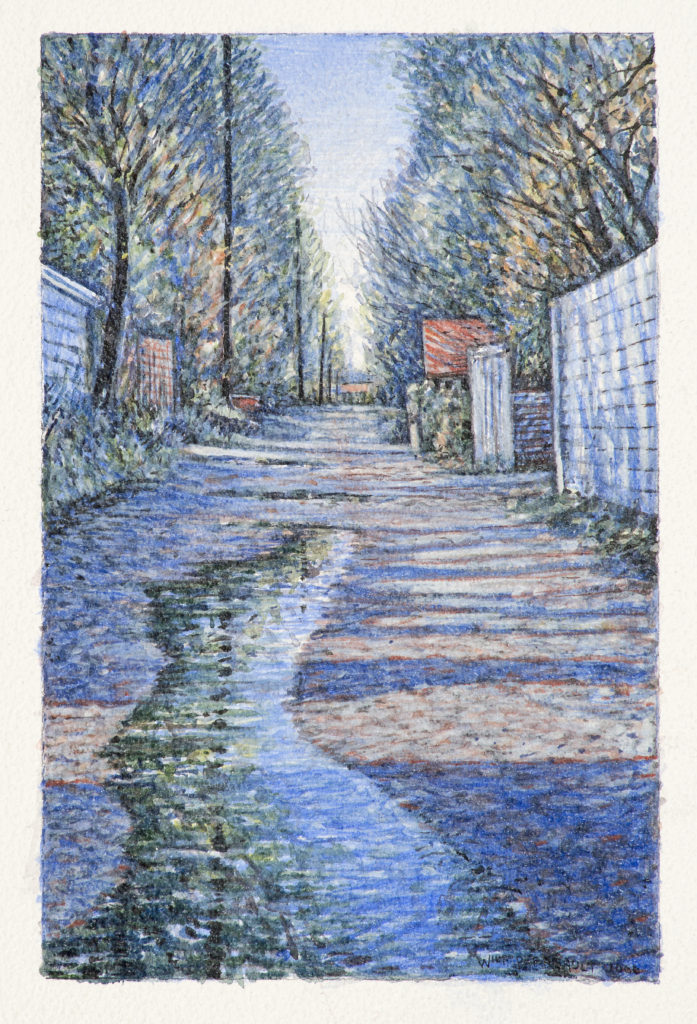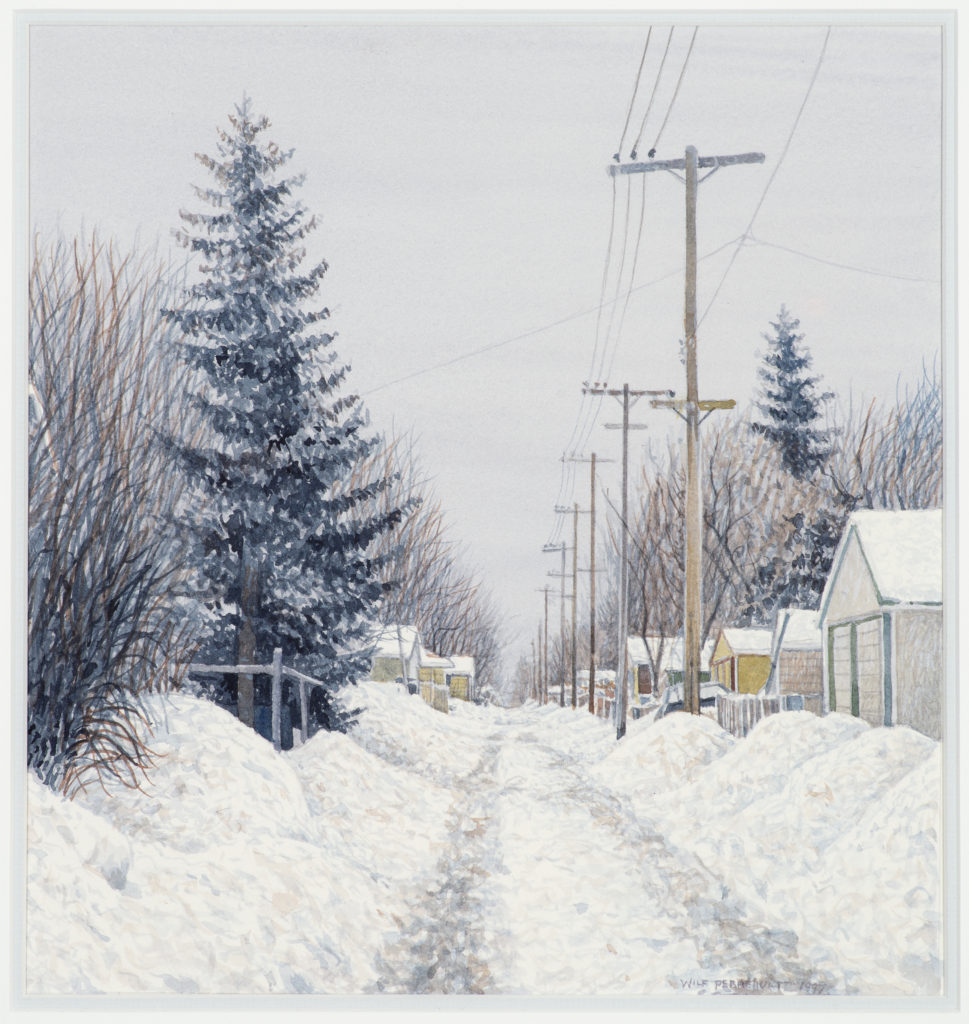(b. 1947)
Located in CT 215 (Language Institute Theatre (La Cité), 2nd floor)

© Wilf Perreault. Reproduced with the permission of the artist. Photograph by the University of Regina.

© Wilf Perreault. Reproduced with the permission of the artist. Photograph by the University of Regina.
(top) Alley Cat, 2000
Acrylic on masonite
14″ x 10 3/4″
University of Regina President’s Art Collection, Shumiatcher Donation. Gift of Dr. Morris C. Shumiatcher, O.C., S.O.M., Q.C. and Dr. Jacqui Clay Shumiatcher, S.O.M., C.M., 2017; sc.2017.60
(bottom) January, 1997
Watercolour
18 3/4″ x 18″
University of Regina President’s Art Collection, Shumiatcher Donation. Gift of Dr. Morris C. Shumiatcher, O.C., S.O.M., Q.C. and Dr. Jacqui Clay Shumiatcher, S.O.M., C.M., 2017; sc.2017.61
For the flâneur, the urban wanderer and seeker of overlooked urban byways, the paintings of Wilf Perreault captivate. The works here typify Perreault’s observant eye and slow philosophy. In his paintings, the rapid stride of life downtown and on the city’s main streets yields to a steady, gentle pace, where natural change is foregrounded: crisping leaves and rosy skies ripening with the hourly, daily and seasonal variations of the landscape.
Perreault was born in 1947 to a Fransaskois farming family, growing up in small towns and later Prince Albert and Saskatoon. Supported in his artistic development as a child, the lessons he received in drawing, painting (including en plein air) and printmaking established a technical foundation for his work and set the course for his lifelong interest in art. This instruction ensured he was well-prepared when he attended the University of Saskatchewan for an undergraduate art degree, which he was awarded in 1970. The classes led by Reta Cowley and Otto Rogers, and the work of artists Robert Hurley, Ernest Lindner and Dorothy Knowles, five artists whose works are also found in the President’s Art Collection, were particularly influential to Perreault. It was after graduating that he moved to Regina. It was also around this time that he met Joe Fafard and Vic Cicansky, whose work held more in common with Californian Funk than the dominating New York modernist abstraction. Fafard was to become a close friend and mentor, a relationship acknowledged in the portrait Joe Fafard that Perreault produced in 1975.
However, such portraits are rare. His alleyscapes were conceived during his time in Saskatoon, and included the alley he played in as a child behind his home. Indeed, memory and nostalgia play a large role in both Perreault’s practice and the viewer’s experience of the work; a major contributor to their charm. These secret cities reveal intimate local knowledge, and are frequently recognised or mistaken for specific spots, an effect of their evocative resonance. The paintings started with the reflections of puddles, a device the artist used to explore the meeting of reality, representation and abstraction. These curious pools are still often a focal point, and join Perreault’s signature one-point perspective, often directed down the alley’s centre in a kind of urban enfilade, as a hallmark of his work. Abstraction is also approached through the use of impressionistic brushstrokes, which are particularly apt for rendering glittering and glowing light effects, the texture of leaves, and snow, represented in all its permutations from late autumn to slushy spring. Although his work often begins with photographing a location, for these reasons Perreault’s interest lies far beyond the documentary.


